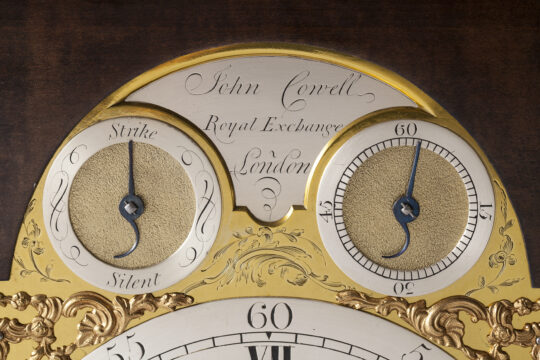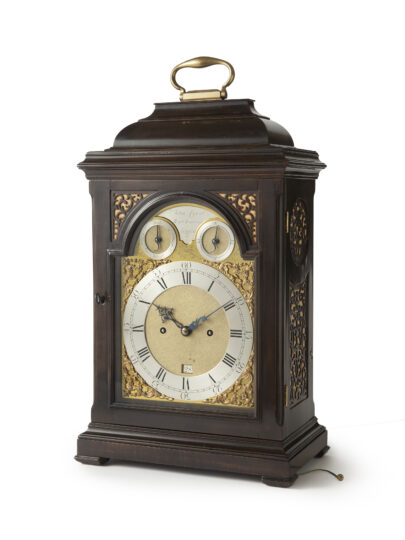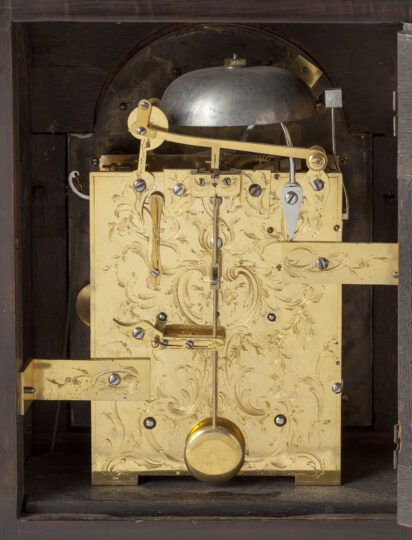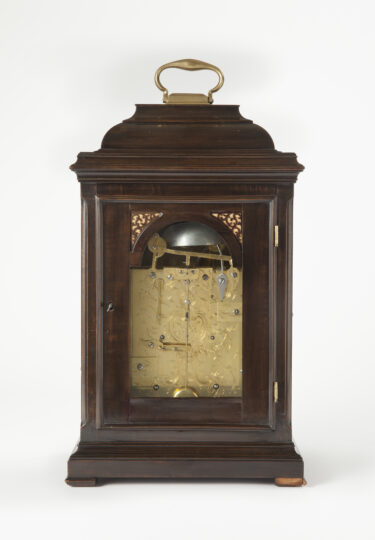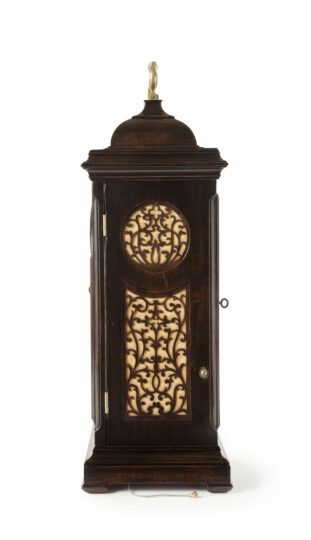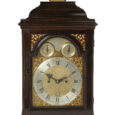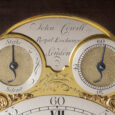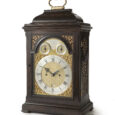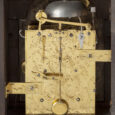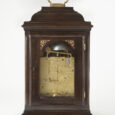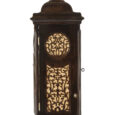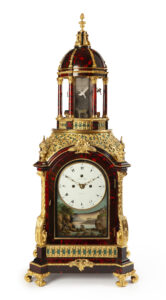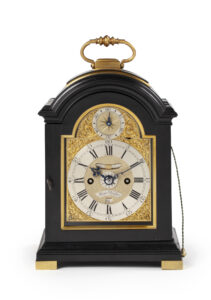BRACKET CLOCK John Cowell Royal Exchange London Ca. 1760 England
M&R34a
BRACKET CLOCK
Signed: John Cowell Royal Exchange London
Circa 1760
England
Movement
The eight-day, spring-driven double-fusee movement of this bracket clock consists of going and striking trains with trip repeat. The going train has verge escapement and a short pendulum. The striking train indicates the hours fully on a bell. This can be repeated at all times by pulling a chord to the side of the clock. The backplate is profusely engraved with scroll, flower and leaf motifs.
Dial
The arched brass dial has a silvered brass chapter ring with Roman hour numerals, Arabic five-minute and minute divisions. There is a date aperture in the matted centre above the VI. The time is indicated by a fine pair of pierced blued-steel hands. There are two subsidiary dials above the chapter ring, the left one for switching off the striking: strike/silent, the right one for regulating the timekeeping, a so-called rise-and-fall dial. Between these two is the maker’s signature: John Cowell Royal Exchange London. The four corners are embellished by symmetrical pierced cast-brass spandrels.
Case
The ebonised pearwood-veneered oak inverted bell-top case of this bracket clock has pierced wooden sound frets to the sides, whilst there are arched glazed doors to back and front with sound frets in the top corners. The case is surmounted by a carrying handle. Top and bottom of the case are moulded, whilst the clock rests on four ebonised-pearwood feet.
Duration 1 week
Height 50 cm
Width 27 cm
Depth: 16.5 cm
Literature
Brian Loomes, Watchmakers & Clockmakers of the World, London, 2006, p. 179.
The maker
John Cowell is recorded as being active as a clockmaker in London (Royal Exchange) in the late 18c. He must have been making clocks earlier than that as this clock clearly dates back to the third quarter of the 18th century.


